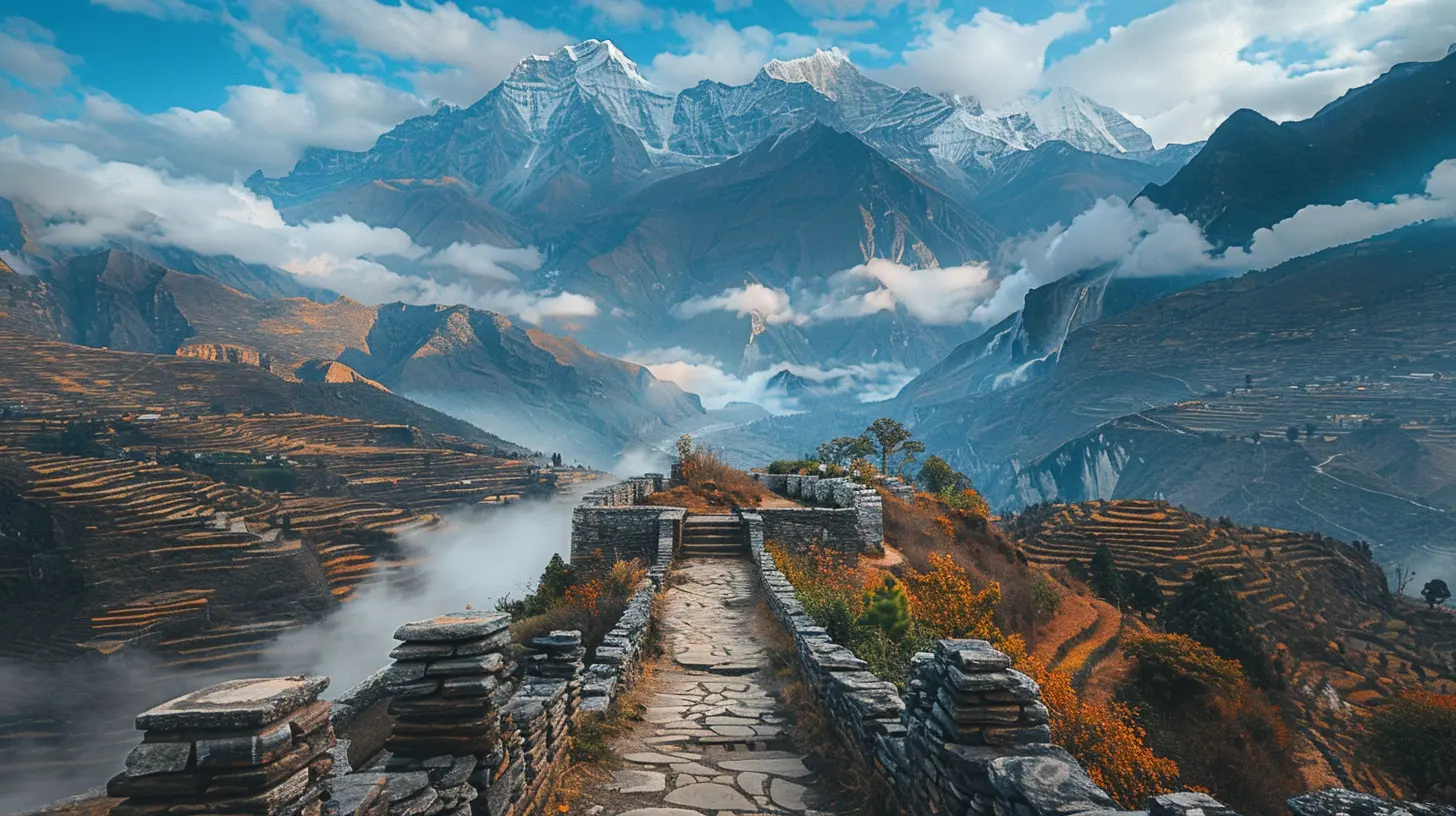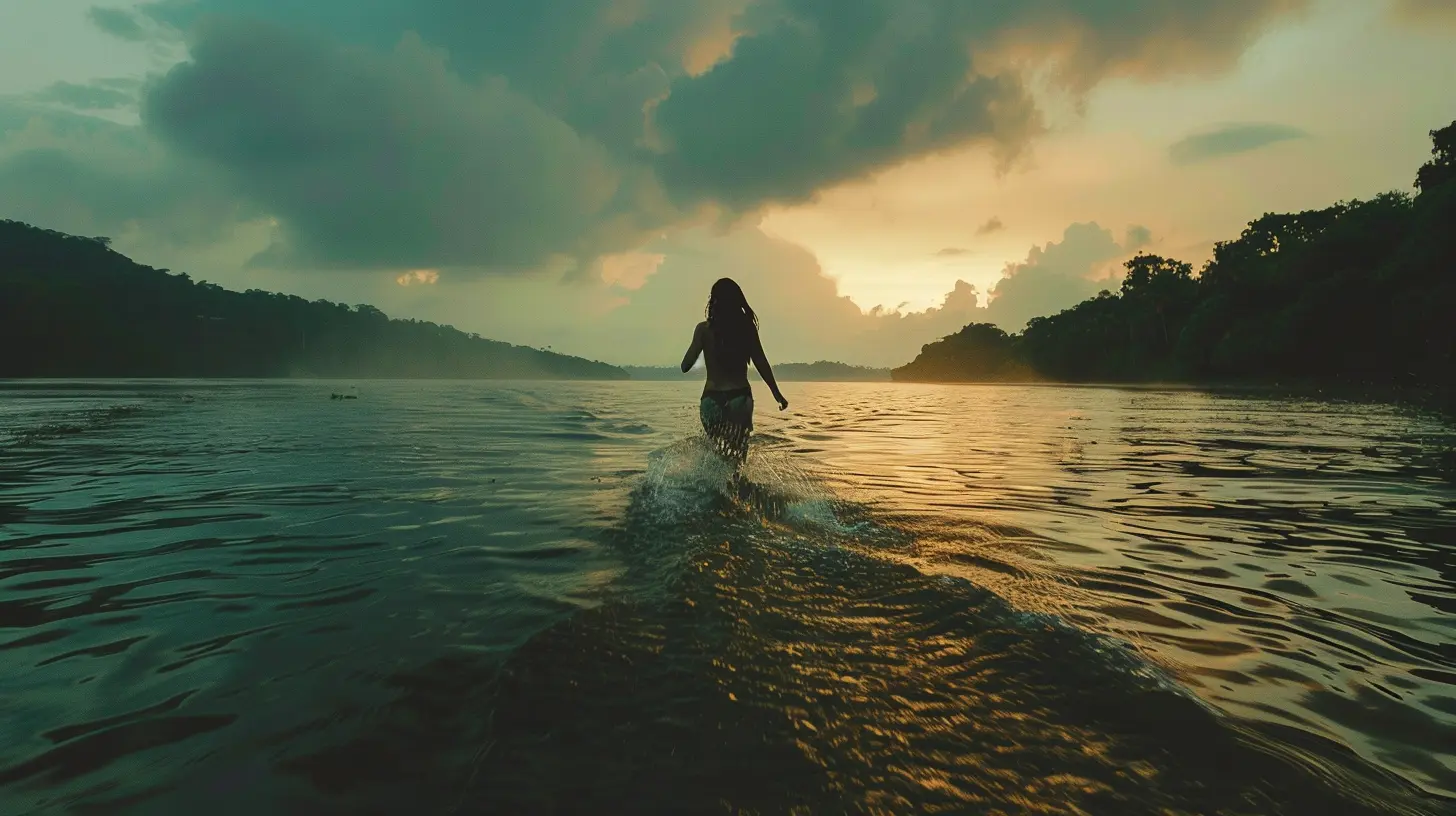Shooting on the Move: Tips for Capturing Motion in Travel Photography
25 August 2025
So you’ve packed your bags, grabbed your camera, and hit the road for your next big adventure. Whether you're hiking through misty mountain trails, zipping through bustling street markets, or hopping on tuk-tuks in Southeast Asia, one thing’s for sure — the world doesn’t stand still. And neither should your photography!
Capturing motion in travel photography is like bottling up the energy of the moment. It adds life, excitement, and a sense of story to your photos. But hey — it’s not always easy, right? Motion blur, focus fails, harsh lighting — we’ve all been there. That’s why I’ve put together this guide packed with practical and creative tips to help you nail those shots on the go.
Let’s dive in, shall we?
Why Capture Motion in the First Place?
Before we get into the how, let’s talk about the why.Motion adds drama. It captures a slice of life. Whether it’s the whoosh of a passing train, the expressive arms of a street performer, or water cascading down a rocky cliff — movement tells a story static shots can’t.
Think about it: would you rather look at a photo of an empty street or one where a cyclist is zooming by as birds take flight? The latter feels alive. It places the viewer right there in the moment.
Gear Check: What You'll Need
While you can technically shoot motion with just about any camera, having the right tools makes life a lot easier — and your photos far better.1. Camera with Manual Controls
You don’t need a fancy DSLR or mirrorless camera (although they help), but you do need something that allows control over shutter speed and ISO. These settings are your motion-control dials.2. A Fast Lens
A lens with a wide aperture (like f/1.8 or f/2.8) lets in more light. This is gold when shooting in low light or when you want buttery backgrounds.3. ND Filters
Ever wanted to capture a smooth waterfall or blurred crowd in daylight? ND filters act like sunglasses for your lens, letting you shoot with slower shutter speeds without overexposing the photo.4. Tripod or Gorillapod
For those long exposures or panning shots, a stable base is a game-changer. Don’t underestimate the power of a tiny flexible tripod!
Mastering Motion: Camera Settings That Matter
Let’s geek out for just a sec (I promise it’ll be quick).1. Shutter Speed — The Magic Wand
Shutter speed is your best friend when shooting motion.- Want to freeze motion? Go for a fast shutter speed like 1/1000s or faster.
- Want to blur motion? Slow it down to 1/60s or even 1/5s.
The trick lies in deciding what story you want to tell. Freeze the action for clarity or blur it to show speed and energy? Your call.
2. ISO — Light’s Balancing Act
When you slow down your shutter, you might need more light. ISO helps with that, but crank it up too high and you’ll introduce noise. Try to keep it below 1600 for clearer shots, unless you're going for a gritty vibe.3. Aperture — Depth and Drama
Wider apertures (lower f-numbers) let in more light and give you that beautiful background blur. Narrower apertures (higher f-numbers) keep everything sharp — useful when shooting wide city scenes with lots of movement.
Techniques to Try: Make Your Shots Pop
Alright, you’ve got the gear and settings down. Let’s get into the juicy stuff — the actual techniques for capturing movement that’ll make your photos shout, “WOW!”1. Panning — Follow the Action
Ever seen those cool shots of a speeding car with a blurred background, but the vehicle’s sharp? That’s panning.Here’s how to do it:
- Slow your shutter (around 1/30s to 1/60s).
- Track your subject with the camera as they move across your frame.
- Snap the shot while still moving your camera with them.
Takes practice? Sure. But the results? Worth the effort.
2. Blur the Background, Not the Subject
Try this when you’re on the move — like shooting out of a train or car window. Keep your subject still (like a friend sitting near the window), but let the background blur as you move. It creates a super dynamic effect that screams adventure.3. Shoot for the Story
Ask yourself: “What’s happening here?”Sometimes movement isn’t about action. It’s subtle — steam rising from a food stall, clothes dancing in the wind, or boats bobbing in a harbor. Look for those micro-moments. They're gems.
4. Practice the Art of Burst Mode
When in doubt — shoot a burst.Your timing won’t always be perfect, especially when things happen fast (think festivals, markets, or wildlife). Burst mode is your safety net. Shoot a bunch, delete the duds, keep the gold.
Travel-Specific Scenarios: How to Approach Them
Let’s get specific. Different types of travel experiences call for different motion strategies. Here’s how to tackle some common travel scenes.1. Busy Streets and Markets
Street photography is all about capturing life in motion.- Go for candid moments.
- Use a slightly slower shutter (like 1/80s) to show movement in hands or feet while keeping faces sharp.
- Frame your shot and let people walk into it — this lets you anticipate the moment.
2. Night Scenes and Light Trails
Cities come alive at night, and motion shots shine in low-light.- Use a tripod and set your shutter to several seconds (5–10s).
- Start with ISO 100 and adjust as needed.
- Cars, neon signs, and people walking through a long exposure can create magical light trails or ghost-like blurs.
3. Nature and Waterfalls
Nature is always moving — trees swaying, water flowing, clouds shifting.- Use ND filters to shoot slow exposures of water (anywhere from 1s to 30s).
- Capture wind movement in trees by slowing down your shutter and widening your aperture.
4. Transport and Travel Days
Shots from buses, trains, boats, or planes offer cool motion opportunities.- Try focusing on a still subject inside the vehicle while the outside blurs.
- Alternatively, capture the passing landscapes by using a slower shutter and steady hand (or surface).
Creative Ideas for Standout Shots
Want your travel photos to stand out in a sea of selfies? Let’s boost your creativity with these ideas:1. Include Human Elements
A dancer leaping in the square, a cook flipping food, a child running through a fountain — motion feels more intimate when it includes people.2. Reflections and Shadows
Capture motion through reflections — puddles, car windows, glass buildings. Or use shadows for a more abstract feel.3. Silhouettes in Motion
Position your subject against a bright background (like a sunset), slow down your shutter, and capture their movement as a dark, mysterious shape.4. Double Exposures
Combine two photos — one still, one in motion — to create a surreal travel story. Some cameras have this built-in. If not, editing apps can help.Common Pitfalls (And How to Avoid Them)
We’re all human, and mistakes happen. Here’s how to dodge some common ones:- Too much blur? Bump your shutter speed up slightly or use burst mode.
- Overexposed long exposures? Slap on an ND filter (or wait for golden hour).
- Photos too noisy? Lower your ISO, use a tripod, or get more light.
- Photos feel “meh”? Rethink your composition. Add a foreground, shoot from a low angle, or use lines to guide motion.
Editing Tips: Finish Strong
The magic doesn’t stop at the click. A few editing touches can turn good into great.- Use Lightroom or Snapseed to fine-tune contrast and sharpness.
- Adjust clarity and texture to enhance movement details.
- Crop to improve framing or highlight the motion line.
- Play with color grading to build mood (warm tones for energy, cool tones for calmness).
Final Thoughts: Motion Tells the Story
Here’s the thing — travel is movement. Planes, feet, wheels, rivers, birds — it’s all in motion. So why should your photos be frozen in time?When you capture motion, you're not just freezing a moment; you're capturing a feeling. That rush of adrenaline, the heartbeat of the city, the breeze on your face — all of it lives inside those moving frames.
Don’t be afraid to experiment. Some shots won’t work out, sure. But the ones that do? They'll carry the soul of your journey.
So next time you find yourself on the go, remember to keep your eyes open, your finger ready, and your shutter slow (when needed). You’ve got a world of movement to capture — one epic shot at a time.
all images in this post were generated using AI tools
Category:
Travel PhotographyAuthor:

Winona Newman
Discussion
rate this article
1 comments
Anna Chapman
Capturing the energy of travel through motion can be incredibly rewarding. It's a beautiful way to tell stories and evoke emotions. Remember to be patient with yourself as you experiment—every shot is a step toward mastering this art. Safe travels!
August 25, 2025 at 3:53 PM

Winona Newman
Thank you for the thoughtful comment! I completely agree—patience and experimentation are key in capturing the dynamic essence of travel. Happy shooting!


